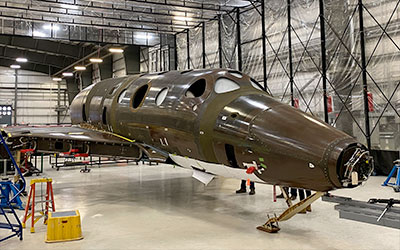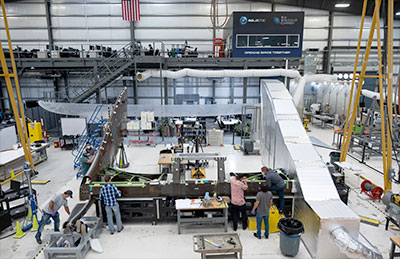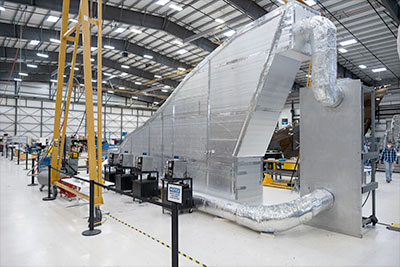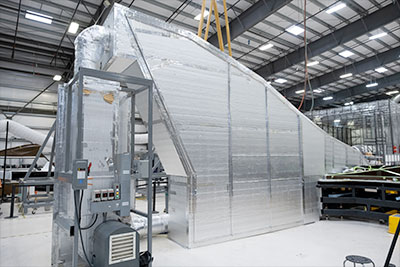 |
| Forum: | Commercial Space - Military Space |
| Topic: | Virgin Galactic's SpaceShip III construction |
|
| Want to register?
|
If you have previously registered, but forgotten your password, click here.
The MOT forms part of the structure of the vehicle, connecting the forward and aft part of the spaceship. It also holds the oxidiser for the rocket motor which powers the spaceship to space. The Virgin Galactic rocket motor is a hybrid system which uses a solid fuel along with a liquid oxidiser and holds the record of being the most powerful hybrid rocket motor to be used in crewed flight.
During a spaceflight, the oxidiser in the MOT allows the solid fuel to burn. "To ignite the rocket motor and burn the fuel an oxidiser is needed," explains Jose Stevens, Chief Engineer, Propulsion, at The Spaceship Company. "On Earth, most fuel burns using the plentiful supply of oxygen found in the atmosphere, but at very high altitudes and in space, the lack of oxygen means we have to bring an oxidiser along with us to allow the rocket motor fuel to burn and generate the required thrust." 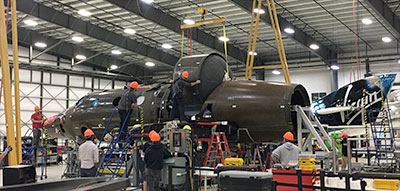 During the most recent Virgin Galactic spaceflight, the rocket motor burned for a duration of 60 seconds and created enough energy to propel our spaceship, VSS Unity, into space at almost three times the speed of sound.
The Virgin Galactic fleet is being built by its development and manufacturing arm, The Spaceship Company, in Mojave, CA. The team is building and assembling a fleet of spaceships and carrier aircraft for the Virgin Galactic operations in New Mexico. The first SpaceshipTwo, VSS Unity, is progressing through its flight test program with the next two vehicles in course of production. |
| Robert Pearlman | Virgin Galactic release The latest spaceship in Virgin Galactic's fleet completes major build milestone"Weight on Wheels" furthers company's goal of a commercial spaceship fleet Virgin Galactic Holdings, Inc., the world's first commercial spaceline, announced today (Jan. 8) that it has completed a major milestone in the build of its next spaceship. In a moment comparable to a ship taking to the water for the first time, the latest spaceship is now bearing its own weight in a stage of its assembly termed Weight on Wheels. At this critical juncture, 80% of the vehicle's major structural assembly is complete. 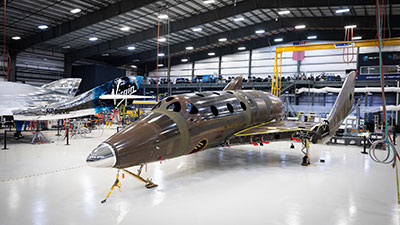 This Weight on Wheels milestone has been reached considerably faster than it took to get to this stage with our first SpaceShipTwo, VSS Unity, which is currently in flight-test. This has been achieved through experience curve benefits which include an evolution to a more modular-based assembly process.
With the spaceship now bearing its own weight, the teams are starting work connecting the modules' integrated systems, including the flight control systems from fuselage to tail booms.
A secondary benefit of Weight on Wheels, is the mobility it affords the spaceship, allowing better access and greater efficiencies for the engineers as they complete the build. The teams will also now be able to check and confirm the vehicle's weight.
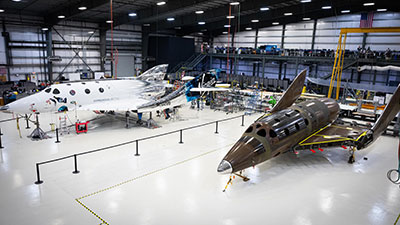 As this work completes, the spaceship will be positioned in the hangar for the start of integrated vehicle ground testing which verifies the integrity of all its systems. This is a precursor to moving the spaceship from Mojave to Spaceport America in New Mexico where it will start its flight test program.
The Virgin Galactic spaceship fleet is beginning to take shape with a third spaceship, also under construction in Mojave, currently around 50% structurally complete. In the coming months, that vehicle will achieve its next major milestone, with completion of its wing and tail boom structure. Virgin Galactic plans to build 5 spaceships in total and a second mothership to meet the demand for human space flight beyond the 600 Future Astronauts from 60 countries, who have already purchased tickets to fly.
George Whitesides, CEO of Virgin Galactic said: "Reaching the Weight on Wheels milestone, considerably faster than it was achieved for VSS Unity, is a huge accomplishment and is testament to the growing expertise of the teams and the unique capabilities of our company. We now have two spaceships which are structurally complete with a third not too far behind. These spaceships will very soon be completing regular trips to space and back, providing thousands of private astronauts with a truly transformative experience." 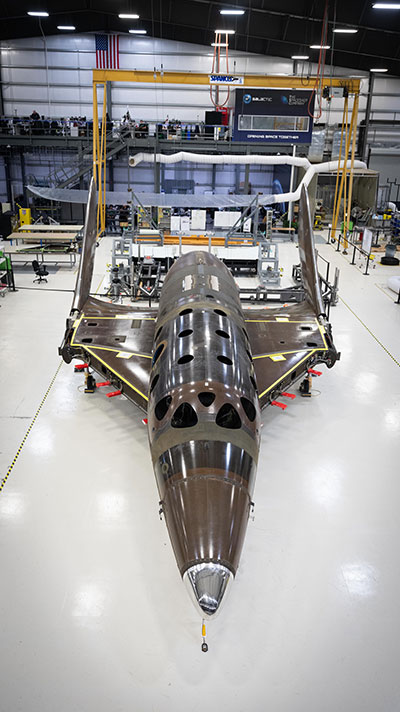 |



